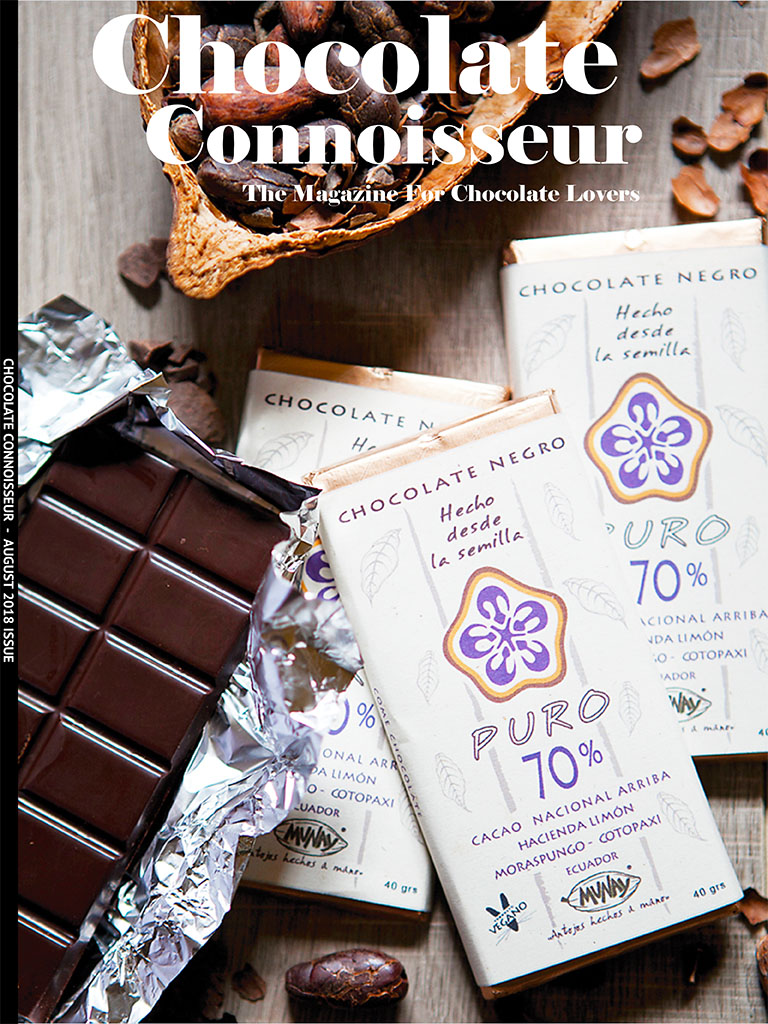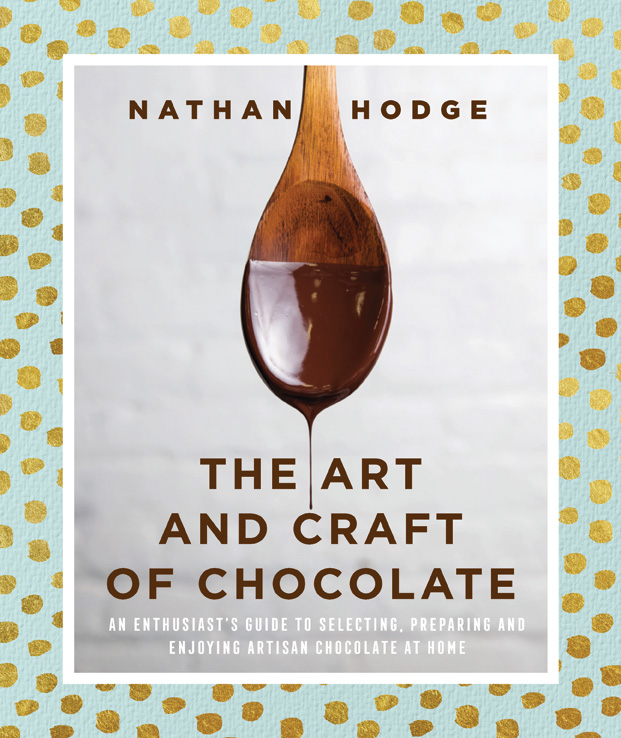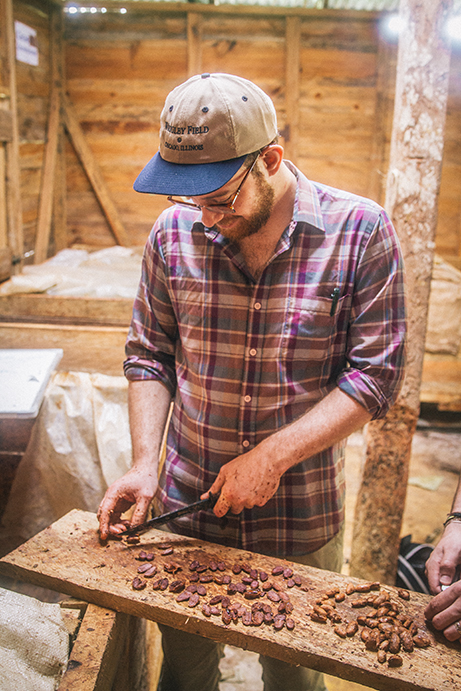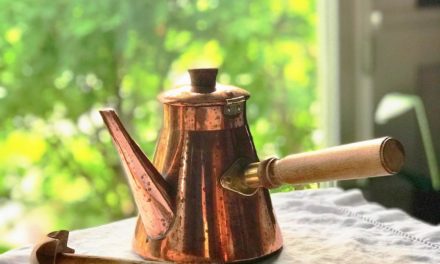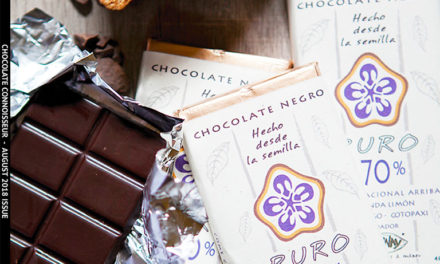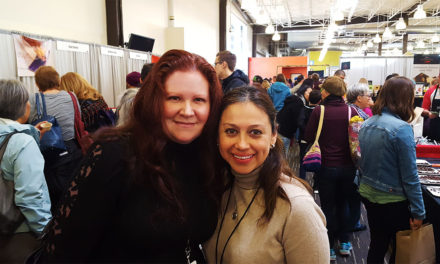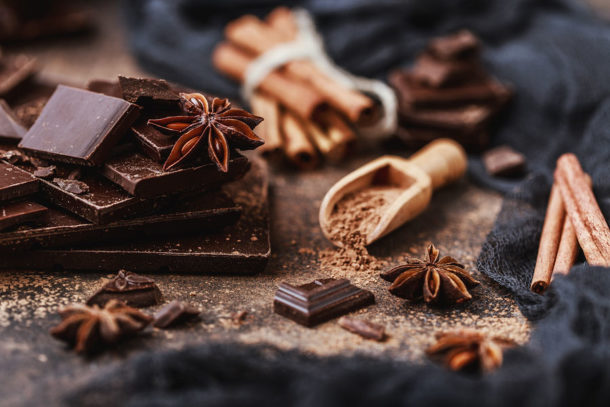Despite his crazy-busy schedule I managed to catch up with Nate recently to learn more about how he got into chocolate, why he prefers to work with un-roasted cacao, how writing his new book came about, and more.
Before we get started, when you’re done with the interview here, please be sure to check out Nate’s Guajillo Chile Flan recipe, straight from The Art and Craft of Chocolate itself, right here in your August 2018 issue of Chocolate Connoisseur Magazine. Click here to view the recipe.
Victoria Cooksey (VC): How did you get started making chocolate originally?
Raaka Beginnings
VC: When and how did you and co-founder Ryan Cheney meet? What were the pleasures and difficulties of starting a chocolate business? What are some of the ongoing challenges?
Who doesn’t like chocolate? It’s the thing that keeps you going during long days (or nights), and the clawing sensation at the back of your head when you reach for what feels like an insurmountable obstacle. The challenge when you’re trying to grow any kind of business is how to keep your costs and overhead low while trying to increase the volumes of chocolate that you make and sell. It’s always been the key challenge, and one that looks to continue to be a challenge for the foreseeable future.
Cacao, being a fermented food, can contain so many different flavors because there are so many impending variables in the natural fermentation process it goes through.
When the fermentation of cacao is done correctly, we believe the world deserves to taste these flavors in their most unaltered chocolate state.
That’s not to say there isn’t something magical that roasting can do for chocolate, but just that both roasted and un-roasted chocolate can provide the chocolate consumer with different, and awe-inspiring, experiences.
VC: Where does the inspiration come from for flavors in your bars, especially the ones designed for the First Nibs subscription? (First Nibs is Raaka’s monthly chocolate subscription, featuring novel and seasonal bars). Which inclusion has been the most difficult to work with, and why?
VC: What has your role been with the documentary Setting the Bar and what would you like the documentary to accomplish?
In the U.S. we tend to focus on the global environmental impact deforestation has, while ignoring the horrors that can happen to people on a local level. A strong cacao economy is one way to help stave off prospectors who may be looking to cut down forest to plant African palm of raise cattle.
In the best case scenario, the film inspires consumers to make informed decisions about the brands they choose to support, and hopefully it also inspires chocolate companies to rally together to enact change in the way global trade operates.
Stable Sourcing
VC: In what ways does Raaka develop and maintain relationships with the cooperatives and farms it sources cacao from?
1. Direct Purchasing: We cut out all the middlemen in the traditional commercial supply chain so that we cannot only have a close relationship with our source, but we can also have superior transparency and traceability as it relates to both pricing and quality.
2. Stable pricing: We believe that our financial relationships with our sources should exist outside of the commodity systems. A lot of certifications are still tied to the commodity price. This means farmers’ wages can differ drastically from year to year. We view this as unsustainable for developing long-term relationships. It is our commitment to maintain our price or increase it from one year to the next.
3. Transparent pricing: Starting this fall we’re going to begin publishing all of our farm gate and export price numbers from all our cocoa bean purchases on our website, starting with our 2016-17 harvest year purchases. We’re really excited to be able to offer this. We’re in the midst of a re-brand at the moment, so we’d love to have these numbers available at the moment, but they will definitely be accessible by the Fall. It’s our hope that, in sticking to these commitments, we can build a greater sense of trust between Raaka and our sources, so that we can grown our business while empowering our cacao sources to do the same.
Photo by Mike Grippi
CLICK HERE TO PICK UP NATE’S BOOK ON AMAZON
And connect with Nate and Raaka at the channels below —
Website: https://www.raakachocolate.com
Facebook: https://www.facebook.com/RaakaChocolate/
Twitter: https://twitter.com/RaakaChocolate
Instagram: https://www.instagram.com/raakachocolate/
Mike Grippi photos — https://www.mikegrippi.com

